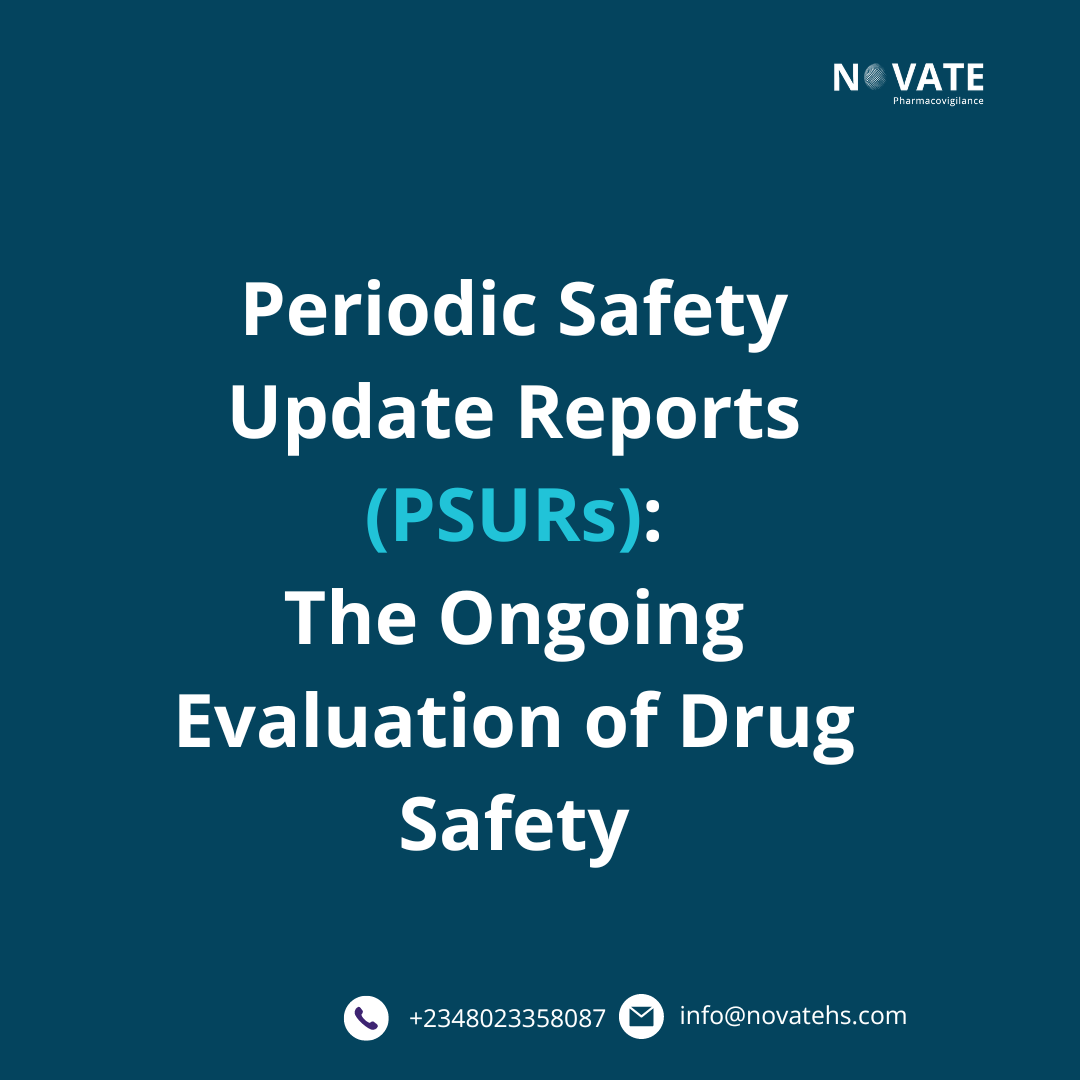
Introduction
In the world of pharmacovigilance, the safety of marketed drugs is a dynamic and ever-evolving concern. Periodic Safety Update Reports (PSURs) play a pivotal role in this continuous evaluation, providing a comprehensive assessment of a drug's safety profile after it has been approved and is being used by a wider population. They ensure that any emerging risks are identified and managed promptly, maintaining a balance between drug efficacy and safety.
Why PSURs Are Essential
Clinical trials, while crucial for initial drug approval, have limitations. They often involve a relatively small number of patients in controlled environments for short durations. Once a drug enters the market, it is exposed to a far more diverse population, including the elderly, children, pregnant women, and those with various health conditions. Furthermore, long-term effects and rare adverse drug reactions (ADRs) may not manifest during the limited timeframe of clinical trials.
PSURs bridge this gap by analyzing real-world data from a large number of patients and identifying potential risks that may not have been apparent during pre-approval studies. They also allow for the assessment of the drug's safety profile over time, as new information and adverse events are reported. This continuous monitoring is crucial for adapting treatment guidelines and improving patient outcomes.
The Role of Regulatory Bodies
Regulatory bodies worldwide, such as the FDA, EMA, and NAFDAC, rely on PSURs to make informed decisions about the continued safety and efficacy of drugs on the market. They use the insights gained from PSURs to update labeling, issue safety warnings, or, in some cases, withdraw a drug from the market. This ongoing surveillance helps ensure that the benefits of a drug continue to outweigh its risks.
Guidance for PSURs
Several guidance documents provide a framework for the preparation and submission of PSURs. These include:
- CIOMS II: International Reporting of Periodic Drug-Safety Update Summaries
- ICH E2C: Clinical Safety Data Management: Periodic Safety Update Reports for Marketed Drugs
- GVP Module VII: Periodic Safety Update Report
- 21 CFR 314.80(c)(2) and 600.80(c)(2)
- NAFDAC Guidelines on Good Pharmacovigilance Practices
These guidelines offer a standardized approach, ensuring that PSURs are comprehensive, scientifically rigorous, and valuable tools for regulatory decision-making. They promote consistency in reporting and facilitate communication between pharmaceutical companies and regulatory authorities.
Key Points About PSURs
- Single Substance, Multiple Indications: One PSUR is submitted for each active pharmaceutical ingredient, covering all approved indications, dosage forms, and regimens. This comprehensive approach ensures that all potential interactions and effects are monitored.
- Stand-Alone and Cumulative: Each PSUR should be complete and comprehensive on its own, presenting both new and cumulative safety information. This allows for an accurate assessment of the evolving risk profile.
- Reference Safety Information: PSURs include a core safety and approved indications component, serving as a baseline for assessing changes in the safety profile. This helps in detecting significant deviations from expected outcomes.
- Level of Detail: The depth of information in a PSUR should be proportionate to the known or emerging safety concerns of the drug. For instance, if significant new safety issues arise, these should be presented in detail. This tailored approach ensures that resources are focused where they are most needed.
PSUR Content
A typical PSUR includes the following sections:
- Introduction: Background information on the drug and its regulatory status, setting the context for the report.
- Sales and Exposure Data: Details the drug's sales figures and estimated patient exposure, providing insights into real-world usage patterns.
- Adverse Event Reports: Summarizes reported adverse events from various sources, including spontaneous reports, clinical trials, and literature. This section highlights any emerging trends or concerns.
- Signal Evaluation: Analyzes potential safety signals (unexpected patterns or trends in adverse events) and assesses their clinical significance. This critical analysis helps prioritize safety issues for further investigation.
- Risk Management Plan: Outlines measures to minimize and manage identified risks, ensuring that appropriate mitigation strategies are in place.
- Overall Conclusion: Presents an updated evaluation of the drug's safety profile, considering all available data. This section provides a clear summary of findings and recommended actions.
The PSUR Process
- Data Collection: Gathering safety data from various sources, including spontaneous reports, clinical trials, observational studies, and literature reviews. This comprehensive approach ensures a robust dataset for analysis.
- Data Analysis and Assessment: Evaluating and interpreting the collected data to identify potential safety signals and assess the overall safety profile. This step is crucial for detecting and understanding emerging risks.
- Report Preparation: Compiling the PSUR document according to regulatory guidelines, ensuring clarity and completeness.
- Submission and Review: Submitting the PSUR to regulatory authorities for review and potential action. This process fosters collaboration and transparency between stakeholders.
PSURs and Public Health
PSURs are not merely regulatory documents. They are essential tools for protecting public health. By continuously monitoring the safety of marketed drugs, they help ensure that patients have access to treatments that offer the greatest possible benefit with the lowest possible risk. This ongoing process aids in maintaining public trust in pharmaceutical products and encourages adherence to medication regimens. Moreover, PSURs contribute to global health by sharing knowledge and experience across borders, enhancing drug safety worldwide.
Conclusion
PSURs are a cornerstone of pharmacovigilance, reflecting the ongoing commitment of pharmaceutical companies and regulatory agencies to patient safety. They provide a dynamic assessment of a drug's safety profile throughout its lifecycle, helping to inform prescribing decisions, guide regulatory actions, and ultimately, protect and improve public health. By fostering a proactive approach to drug safety, PSURs play a vital role in enhancing therapeutic outcomes and minimizing risks for patients globally.
If you would like to discuss how Novate Pharmacovigilance Services can support you with your PSURs/PBRER, please email us at info@novatehs.com or phone us on +234 (0) 8023358087.
Reference:
- https://www.ecfr.gov/current/title-21/chapter-I/subchapter-D/part-314/subpart-B/section-314.80
- https://cioms.ch/wp-content/uploads/2018/09/cioms-international-reporting-periodic-drug-safety-update-summaries.pdf
- https://database.ich.org/sites/default/files/E2C_R2_Guideline.pdf
- https://www.ema.europa.eu/en/documents/scientific-guideline/guideline-good-pharmacovigilance-practices-gvp-module-vii-periodic-safety-update-report_en.pdf
- https://www.nafdac.gov.ng/wp-content/uploads/Files/Resources/Regulations/Pharmacovigilanc_Regulations/Good-Pharmacovigilance-Regulations-2019.pdf
